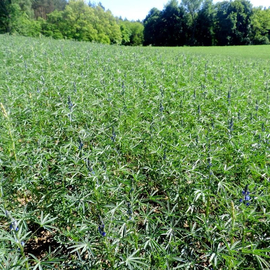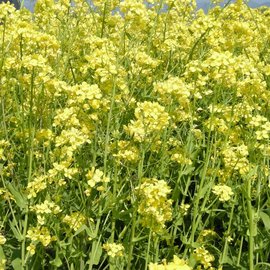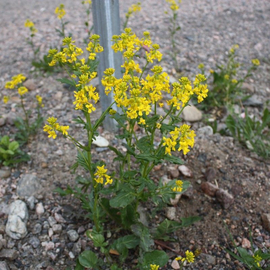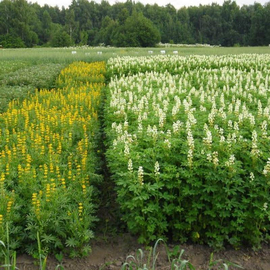
Organic Lupine alkaloid seeds
1.14 €
Lupine has the ability to decompose phosphorus into forms of phosphate that are inaccessible to other crops. Possessing the highest ability to strengthen atmospheric nitrogen, lupine guarantees the provision of it not only for itself, but also for the sub
-
Lupine alkaloid
Excellent green manure. Annual lupine is perfect for developing poor podzolic and sandy soils with high acidity. The plant perfectly accumulates nitrogen, potassium and phosphorus in the soil. Lupine is said to be the most excellent predecessor for strawberries. Based on the content of alkaloids in the greenish mass, lupins are divided into alkaloid (bitter) and non-alkaloid (sweet).
Alkaloid lupins are used only for green manure (green manure), non-alkaloid lupins - above-ground mass - for livestock feed, root and stubble remains - for fertilizer.
Lupine has the ability to decompose phosphorus into forms of phosphate that are inaccessible to other crops. Possessing the highest ability to strengthen atmospheric nitrogen, lupine guarantees the provision of it not only for itself, but also for the subsequent crop. Annual and perennial lupins are more common. Lupine is allowed to be sown in late July - mid-August, after harvesting potatoes, cabbage, and green crops, but it is better in early spring, on well-moist soil. As a result, they get a lot of vegetative mass, which is mowed, crushed and poured into the soil.
There are 2 opposing tips for mowing lupine:
- The best results when feeding lupine with greenish mass are obtained if it is mowed at the beginning of flowering. In this case, the nitrogen contained in the leaves and stems has not yet been converted into grain proteins.
- Most of the green mass of lupine grows during the period of flower formation and flowering. And the greatest amount of nitrogen accumulates as the pods set. During this period, the lupine needs to be mowed, crushed and buried in the ground to a depth of 15–20 cm (The greener the mass, the deeper (up to 20 cm)). If this is not done in time, the trunks will harden and become slower to bend.
The sowing rate of lupine for green manure is 120-160 kg per hectare or 1.2-1.6 kg per one hundred square meters.
With this product buy
Product code: 1439
1.14 €
A perennial plant from the genus of the legume family, it has a branching stem up to 1.5 m high, palmate leaves, an inflorescence - a vertical raceme, flowers of bright colors.
Product code: 1507
1.14 €
An annual winter or spring plant of the genus Brassica of the cruciferous family, the flowers are small, yellow, rarely white, the pods are long, narrow, the seeds contain fat from 33-50%, when sown in autumn it is a good early spring honey plant.
Product code: 12550
1.14 €
A perennial plant with lower lyre-pinnately dissected leaves with a large rounded-oval terminal lobe, a good honey plant; autumn sowings provide early green food in the spring.
Product code: 13154
1.14 €
It is widely used in agriculture for feeding poultry, fish and large animals, both industrially and at home; the percentage of protein that is easily absorbed by the animal’s body is especially valued.




